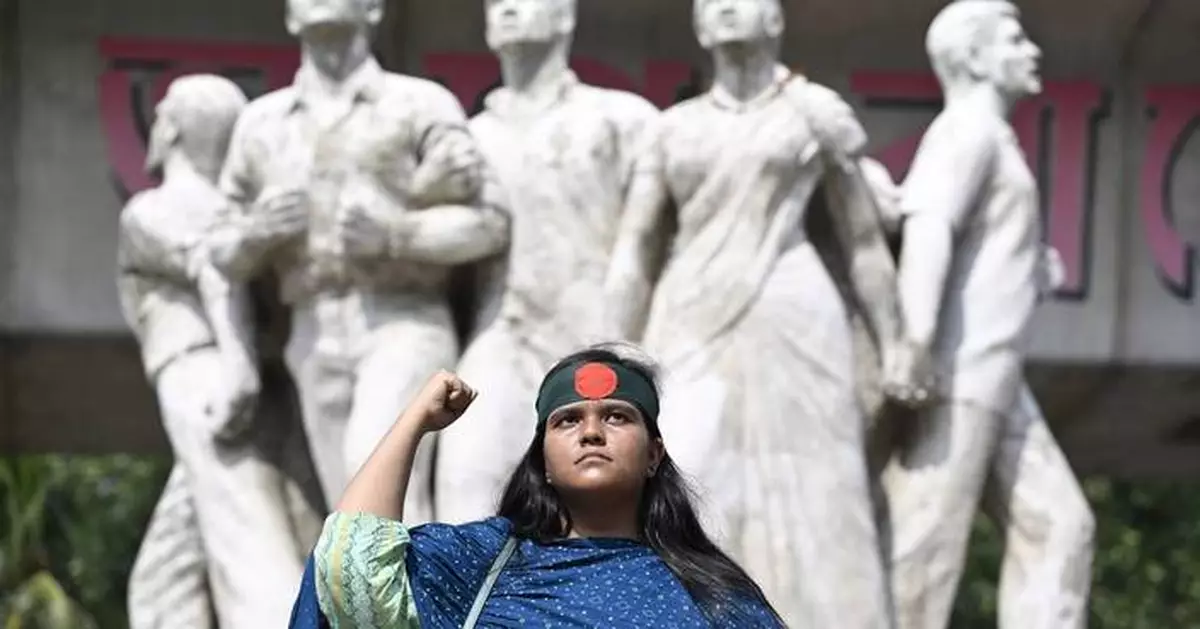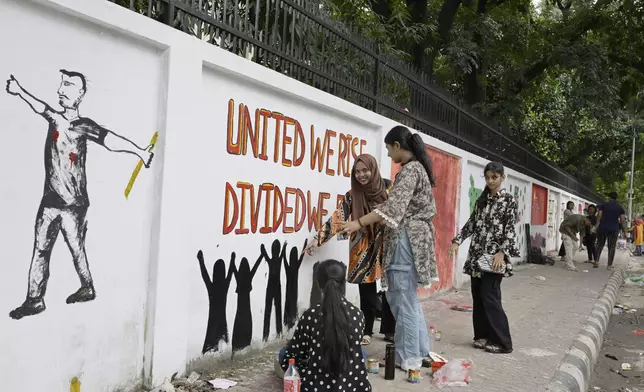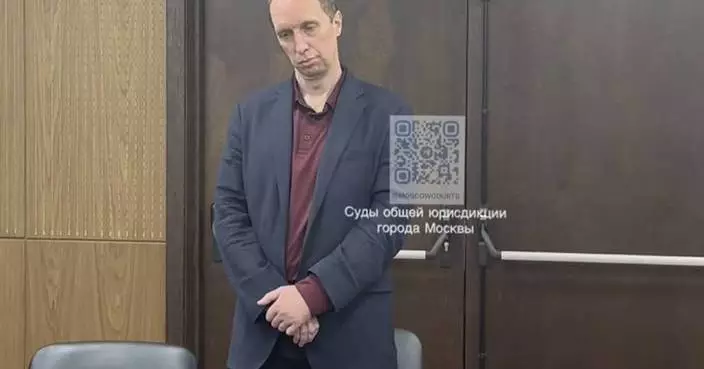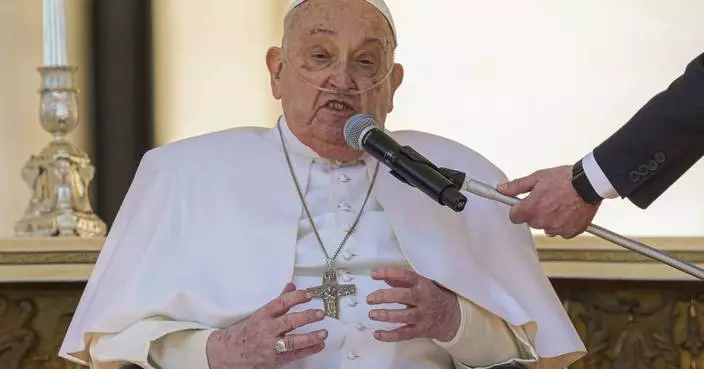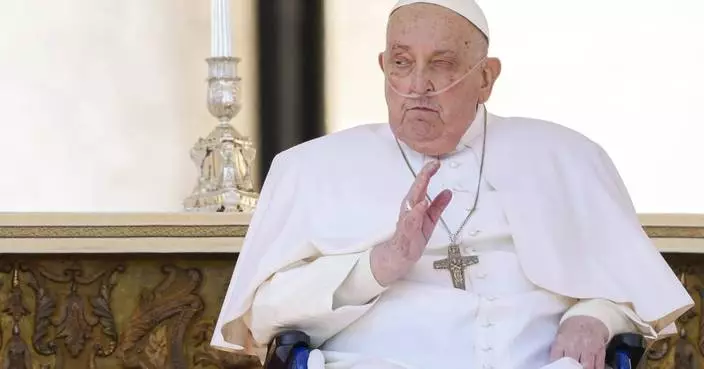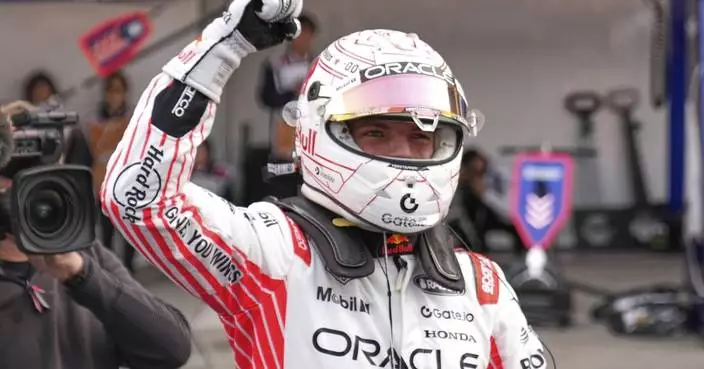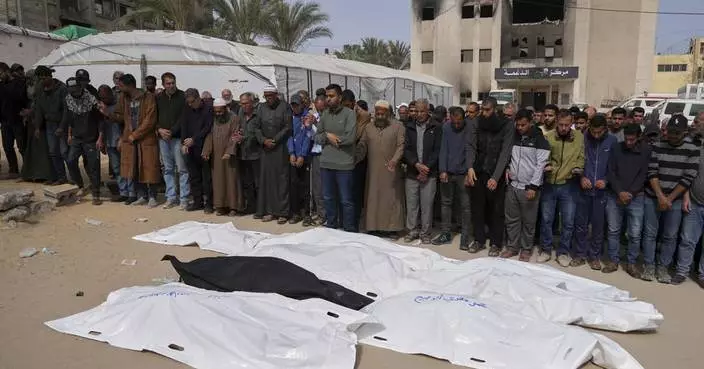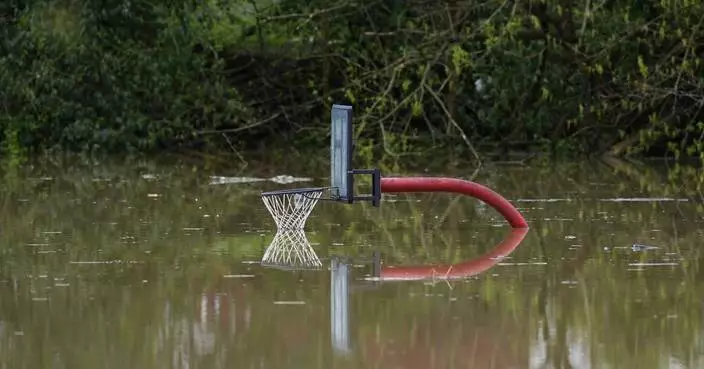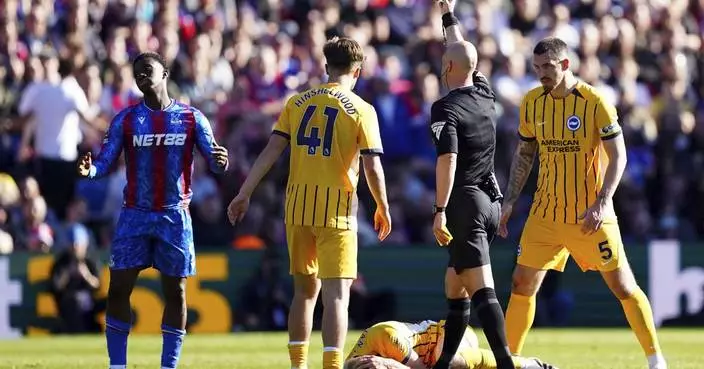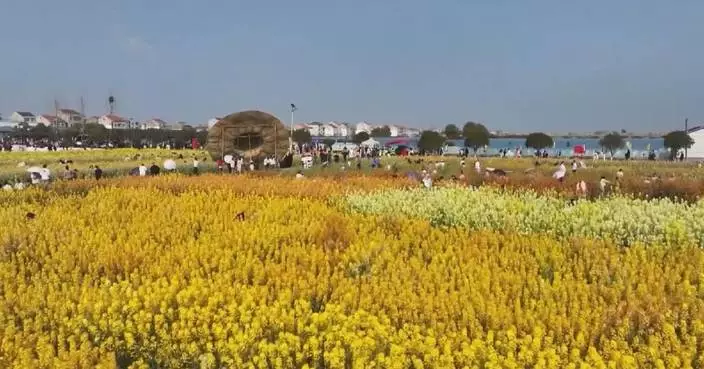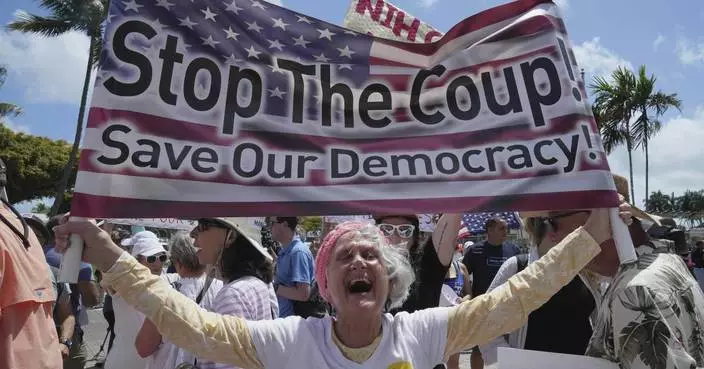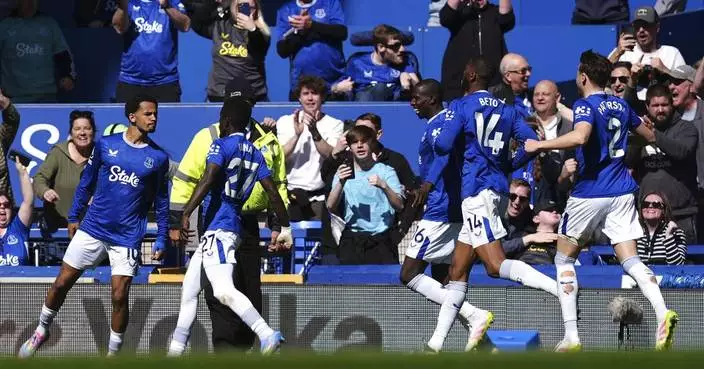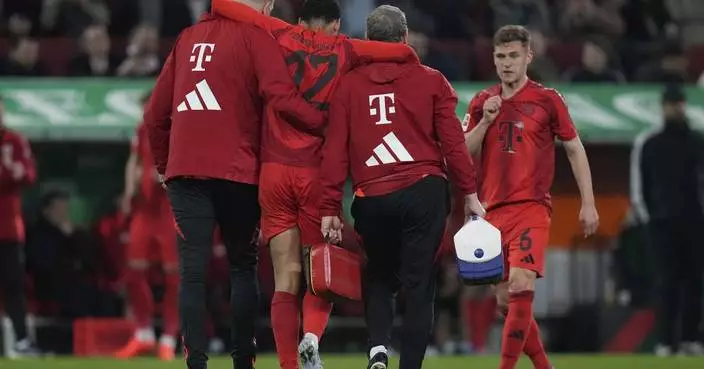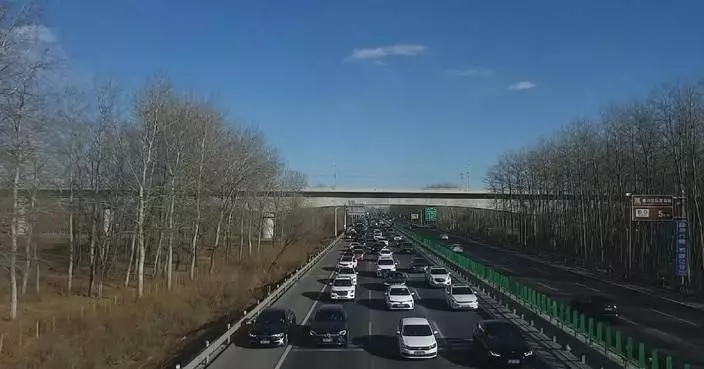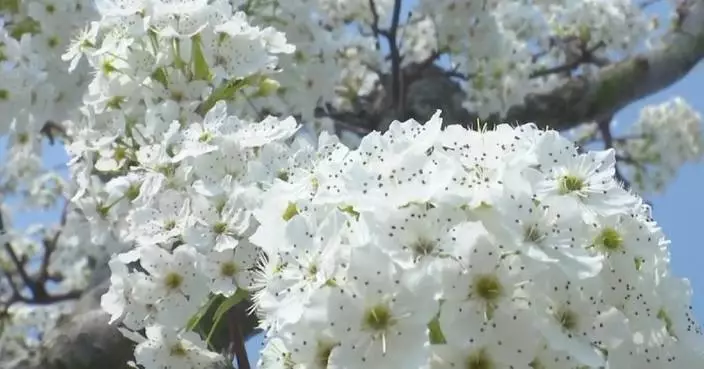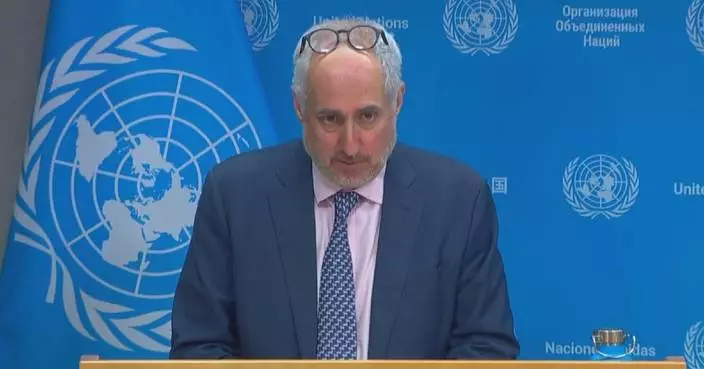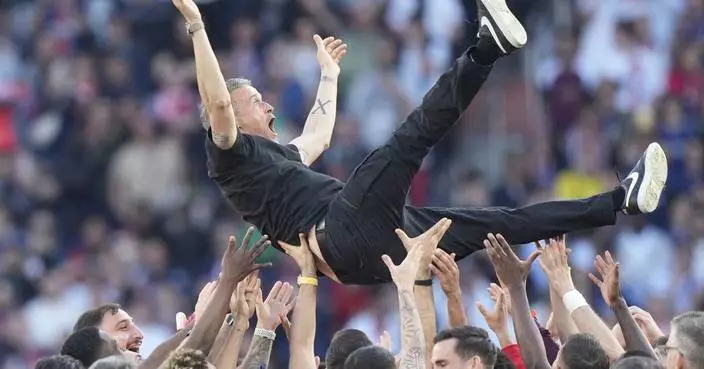Jannatul Prome hopes to leave Bangladesh to study more or possibly find a job after she finishes her university degree, frustrated by a system that she says doesn't reward merit and offers little opportunity for young people.
“We have very limited scope here,” said the 21-year-old, who would have left sooner if her family had enough money to pay tuition at foreign universities for both her and her older brother at the same time.
Click to Gallery
Nourin Sultana Toma, a student at Dhaka University, is seen on the university campus, in Dhaka, Bangladesh, Saturday, Aug. 10, 2024. (AP Photo/Fatima Tuj Johora)
A man walks past graffiti in Dhaka, Bangladesh, Friday, Aug. 9, 2024. (AP Photo/Rajib Dhar)
A student wearing a Spiderman costume walks past graffiti that reads, "Our new secular Bangladesh," in Dhaka, Bangladesh, Friday, Aug. 9, 2024. (AP Photo/Rajib Dhar)
Students create graffiti in Dhaka, Bangladesh, Saturday, Aug. 10, 2024. (AP Photo/Fatima Tuj Johora)
FILE- A policeman aims his weapon at protesters in Dhaka, Bangladesh, during a curfew imposed following clashes during demonstrations against Prime Minister Sheikh Hasina and her government, Monday, Aug. 5, 2024. (AP Photo/Rajib Dhar, File)
FILE - University students protest in Dhaka, Bangladesh, to demand justice for those killed in deadly clashes during demonstrations against the country's quota system for government jobs, July 31, 2024. (AP Photo/Rajib Dhar, File)
FILE - Protesters celebrate at the Parliament House after news of Prime Minister Sheikh Hasina's resignation, in Dhaka, Bangladesh, Monday, Aug. 5, 2024. (AP Photo/Fatima Tuj Johora, File)
FILE- Protesters celebrate beside a defaced portrait of Prime Minister Sheikh Hasina after news of her resignation, in Dhaka, Bangladesh, Monday, Aug. 5, 2024. (AP Photo/Fatima Tuj Johora, File)
FILE- Protesters shout slogans as they celebrate Prime Minister Sheikh Hasina's resignation, in Dhaka, Bangladesh, Monday, Aug. 5, 2024. (AP Photo/Rajib Dhar, File)
Students walk past a defaced mural of Sheikh Mujibur Rahman, father of ousted Prime Minister Sheikh Hasina, in Dhaka, Bangladesh, Saturday, Aug. 10, 2024. (AP Photo/Fatima Tuj Johora)
A woman walks past graffiti in Dhaka, Bangladesh, Friday, Aug. 9, 2024. (AP Photo/Rajib Dhar)
Nourin Sultana Toma, a student at Dhaka University, crosses a street to reach the university campus, in Dhaka, Bangladesh, Saturday, Aug. 10, 2024. (AP Photo/Fatima Tuj Johora)
Nourin Sultana Toma, a student at Dhaka University, poses for a photograph on the university campus, in Dhaka, Bangladesh, Saturday, Aug. 10, 2024. (AP Photo/Fatima Tuj Johora)
But recent events have given her hope that one day she might be able to return to a transformed Bangladesh. After 15 years in power, Prime Minister Sheikh Hasina resigned and fled the country last week — chased out by young protesters, Prome among them, who say they are fed up with the way her increasingly autocratic rule has stifled dissent, favored the elite and widened inequalities.
Students initially poured into Bangladesh's streets in June, demanding an end to rules that set aside up to 30% of government jobs for the descendants of veterans who fought the country's 1971 war of independence from Pakistan. Protesters said that benefitted supporters of Hasina's Awami League, which led that struggle — and who already were part of the elite. The quota and others for marginalized groups meant only 44% of civil service jobs were awarded based on merit.
That such jobs lay at the center of the movement was no coincidence: They are some of the most stable and best paying in a country where the economy has boomed in recent years but not created enough solid, professional jobs for its well-educated middle class.
And that Generation Z led this uprising was also not surprising: Young people like Prome are among the most frustrated with and affected by the lack of opportunity in Bangladesh — and at the same time, they are not beholden to the old taboos and narratives that the quota system reflected.
Their willingness to break with the past was clear when Hasina belittled their demands in mid-July, asking who, if not the freedom fighters, should be awarded government jobs.
“Who will? The grandchildren of Razakars?” Hasina retorted, using a deeply offensive word that refers to those who collaborated with Pakistan to quell Bangladesh’s independence struggle.
But the student protesters wore the word as a badge of honor. They marched on Dhaka University’s campus, chanting: “Who are you? Who am I? Razakar. Who said this? The dictator.”
The following day, protesters were killed during clashes with security forces — only galvanizing the demonstrations, which widened into a broader uprising against Hasina's rule.
Sabrina Karim, a professor at Cornell University who studies political violence and Bangladesh’s military history, said that many of the protesters are so young they cannot remember a time before Hasina was prime minister.
They were raised, like the generations before them, on stories of the independence struggle — with Hasina's family at the center. Her father, Sheikh Mujibur Rahman, was the first leader of independent Bangladesh and was later assassinated in a military coup. But Karim said this narrative had much less meaning for the young protesters than it did for their grandparents.
“It doesn’t resonate with them anymore as much as it did (before). And they want something new,” she said.
For Nourin Sultana Toma, a 22-year-old student at Dhaka University, Hasina's equating of the student protesters with traitors made her realize the gulf between what the youth wanted and what the government could provide.
She said that she had watched as Bangladesh was slowly lulled into becoming immune to inequities and people lost hope that things would ever get better.
The country’s longest-serving prime minister prided herself on boosting per capita income and transforming Bangladesh’s economy into a global competitor — fields turned into garment factories and bumpy roads became winding highways. But Toma said she saw the daily struggle of people trying to buy essentials or find work and her demand for basic rights met with insults and violence.
“It could no longer be tolerated,” Toma said.
This economic distress was keenly felt by Bangladesh’s youth. Eighteen million young people — in a country of 170 million — are not working or in school, according to Chietigj Bajpaee, who researches South Asia at the Chatham House think tank. And after the pandemic, private sector jobs became even more scarce.
Many young people try to study abroad or move overseas upon graduation in the hopes of finding decent work, decimating the middle class and resulting in brain drain.
“The class differences have widened,” said Jannatun Nahar Ankan, a 28-year-old who works with a nonprofit in Dhaka and who joined the protests.
Despite these problems, none of the protesters seems to have truly believed that their movement would be able to dethrone Hasina.
Rafij Khan, 24, was on the streets preparing to join a protest when he heard Hasina had resigned and fled the country. He called home repeatedly to see if he could verify the news.
He said that in the last days of the demonstrations, people from all classes, religions and professions had joined the students on the streets. Now they hugged one another, while others just sat on the ground in disbelief.
“I can’t describe the joy that people felt that day,” he said.
Some of that euphoria is wearing off now as the enormity of the task ahead sinks in. Nobel laureate Muhammad Yunus became the interim leader Thursday and he, along with a Cabinet that includes two student protest leaders, will have to restore peace, build institutions and prepare the country for fresh elections.
The hope for most students is that the interim government gets time to repair Bangladesh’s institutions while a new political party — not led by the old political dynasties — is formed.
“If you asked me to vote in elections right now, I don’t know who I’d vote for,” said Khan. “We don’t want to replace one dictatorship with another."
The young people who took to the streets have often been described as the “I hate politics” generation.
But Azaher Uddin Anik, a 26-year-old digital security specialist and recent graduate of Dhaka University, said that is a misnomer.
They don't hate all politics — just the divisive politics in Bangladesh.
And although he admits that the structural reforms that the country now needs may be more difficult than removing the prime minister, he is hopeful for the first time in a while.
“My last experience is telling me that the impossible can happen,” he said. "And maybe it isn’t too late."
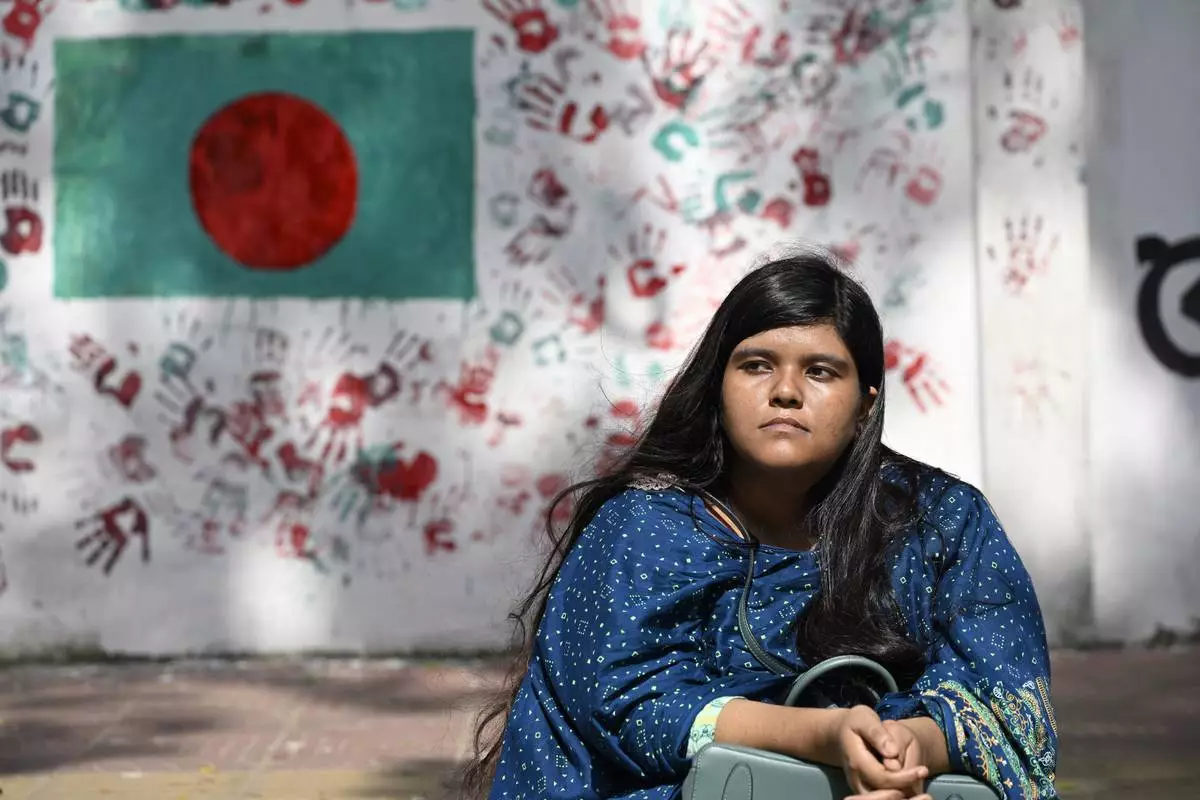
Nourin Sultana Toma, a student at Dhaka University, is seen on the university campus, in Dhaka, Bangladesh, Saturday, Aug. 10, 2024. (AP Photo/Fatima Tuj Johora)
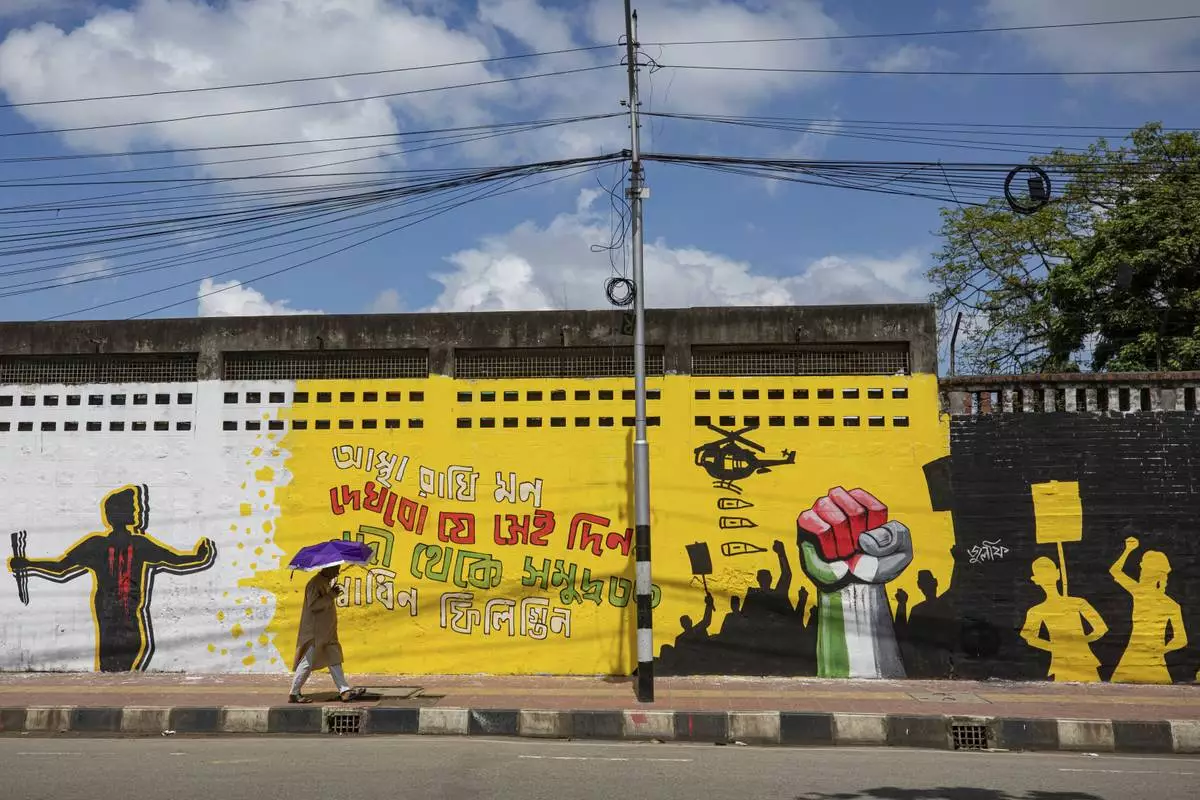
A man walks past graffiti in Dhaka, Bangladesh, Friday, Aug. 9, 2024. (AP Photo/Rajib Dhar)
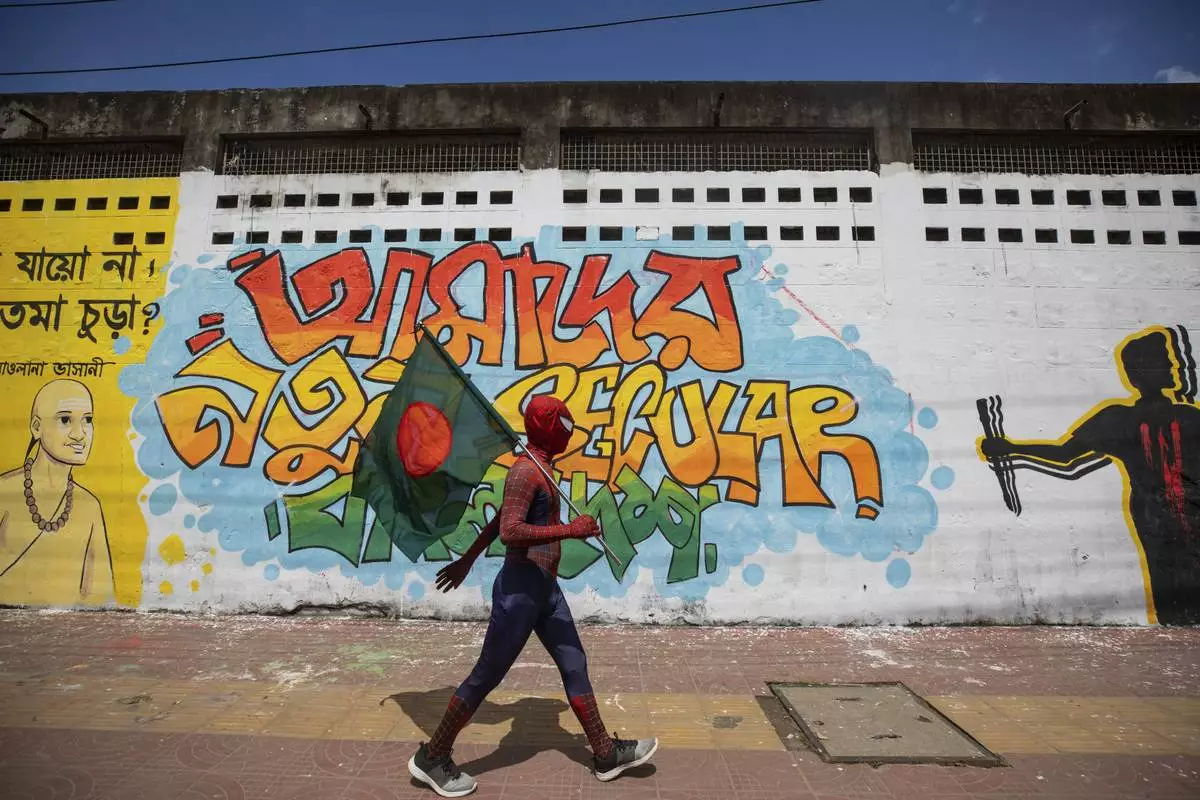
A student wearing a Spiderman costume walks past graffiti that reads, "Our new secular Bangladesh," in Dhaka, Bangladesh, Friday, Aug. 9, 2024. (AP Photo/Rajib Dhar)

Students create graffiti in Dhaka, Bangladesh, Saturday, Aug. 10, 2024. (AP Photo/Fatima Tuj Johora)
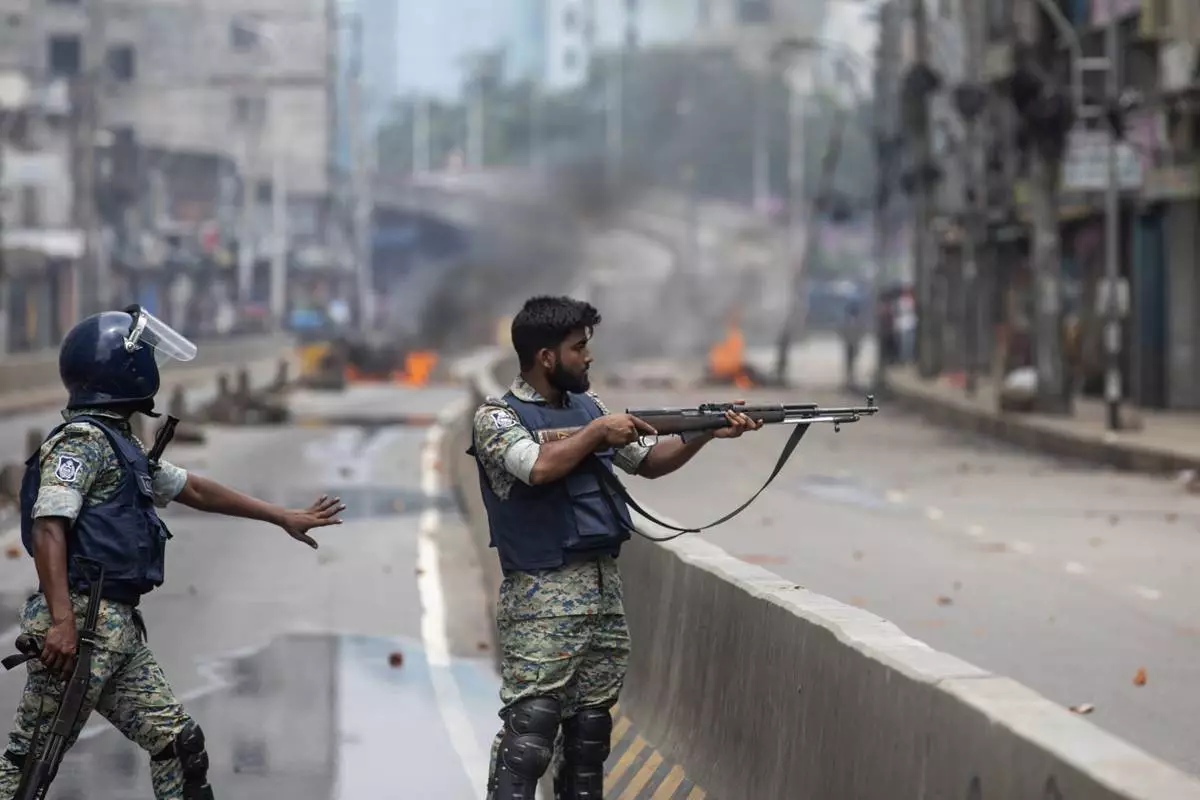
FILE- A policeman aims his weapon at protesters in Dhaka, Bangladesh, during a curfew imposed following clashes during demonstrations against Prime Minister Sheikh Hasina and her government, Monday, Aug. 5, 2024. (AP Photo/Rajib Dhar, File)
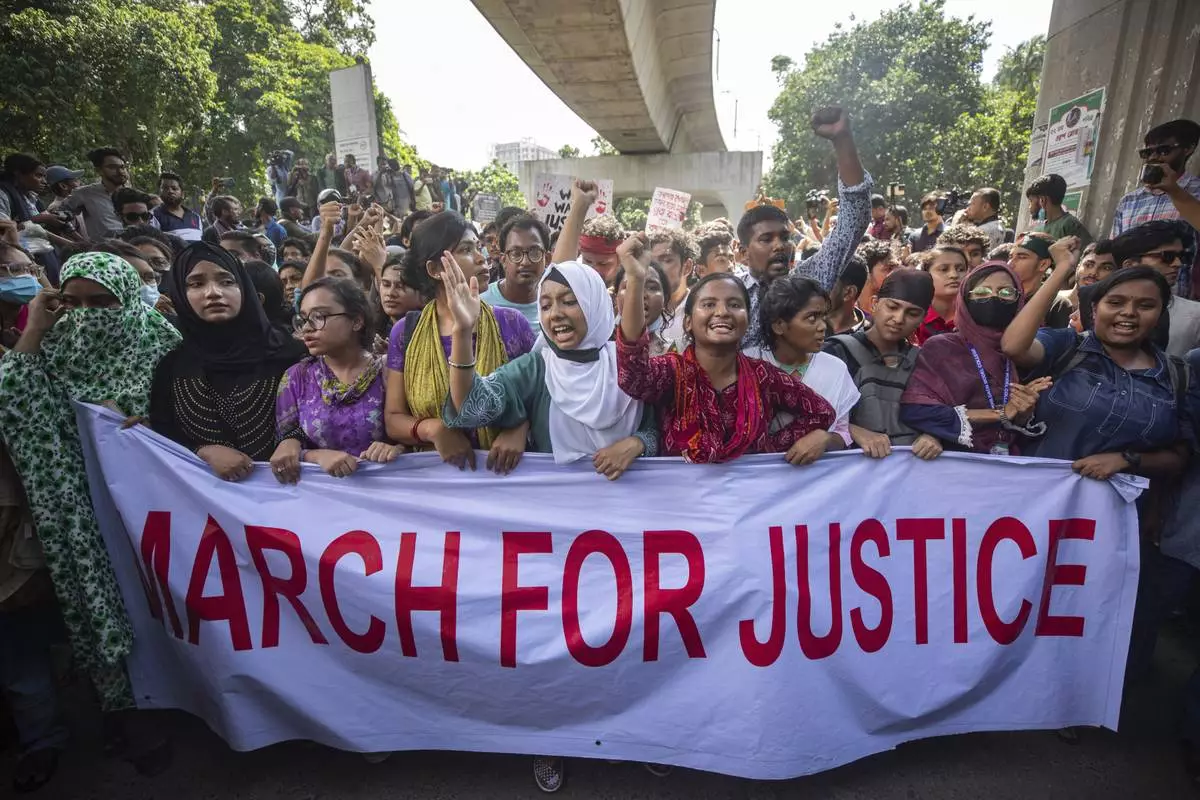
FILE - University students protest in Dhaka, Bangladesh, to demand justice for those killed in deadly clashes during demonstrations against the country's quota system for government jobs, July 31, 2024. (AP Photo/Rajib Dhar, File)
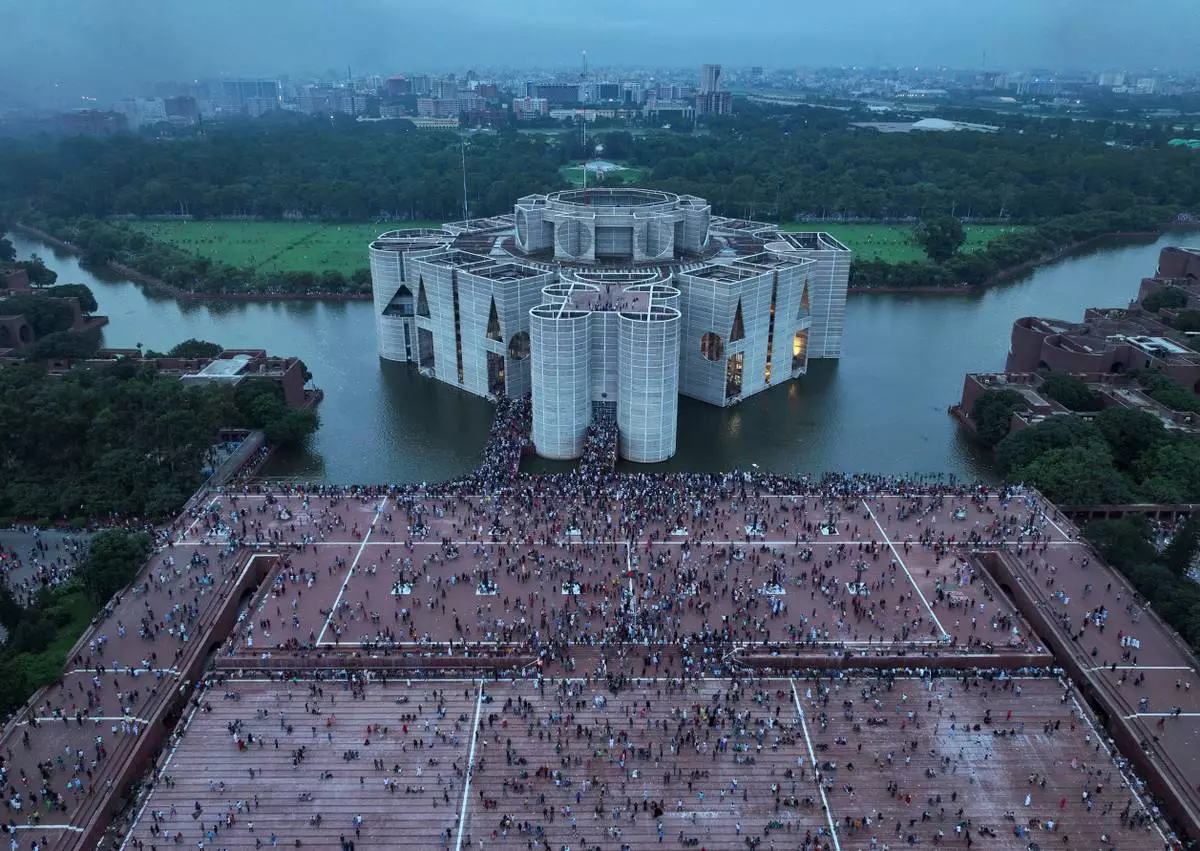
FILE - Protesters celebrate at the Parliament House after news of Prime Minister Sheikh Hasina's resignation, in Dhaka, Bangladesh, Monday, Aug. 5, 2024. (AP Photo/Fatima Tuj Johora, File)
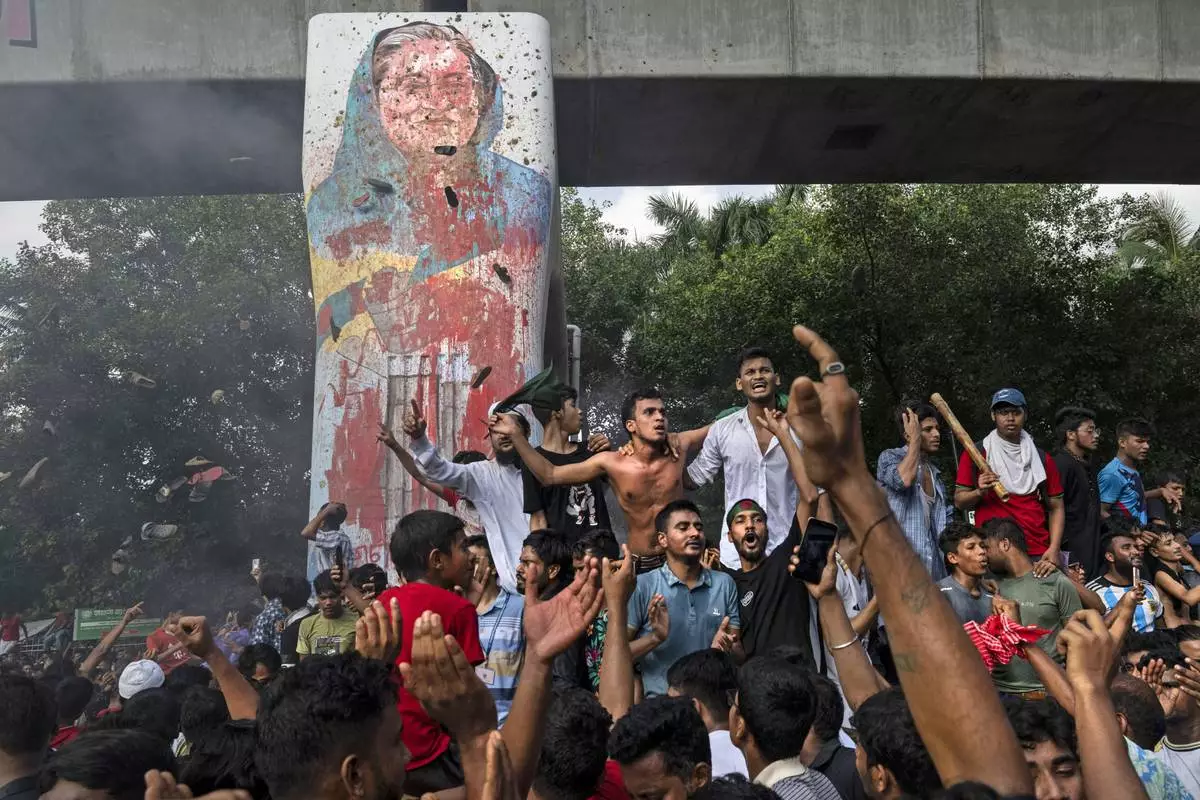
FILE- Protesters celebrate beside a defaced portrait of Prime Minister Sheikh Hasina after news of her resignation, in Dhaka, Bangladesh, Monday, Aug. 5, 2024. (AP Photo/Fatima Tuj Johora, File)
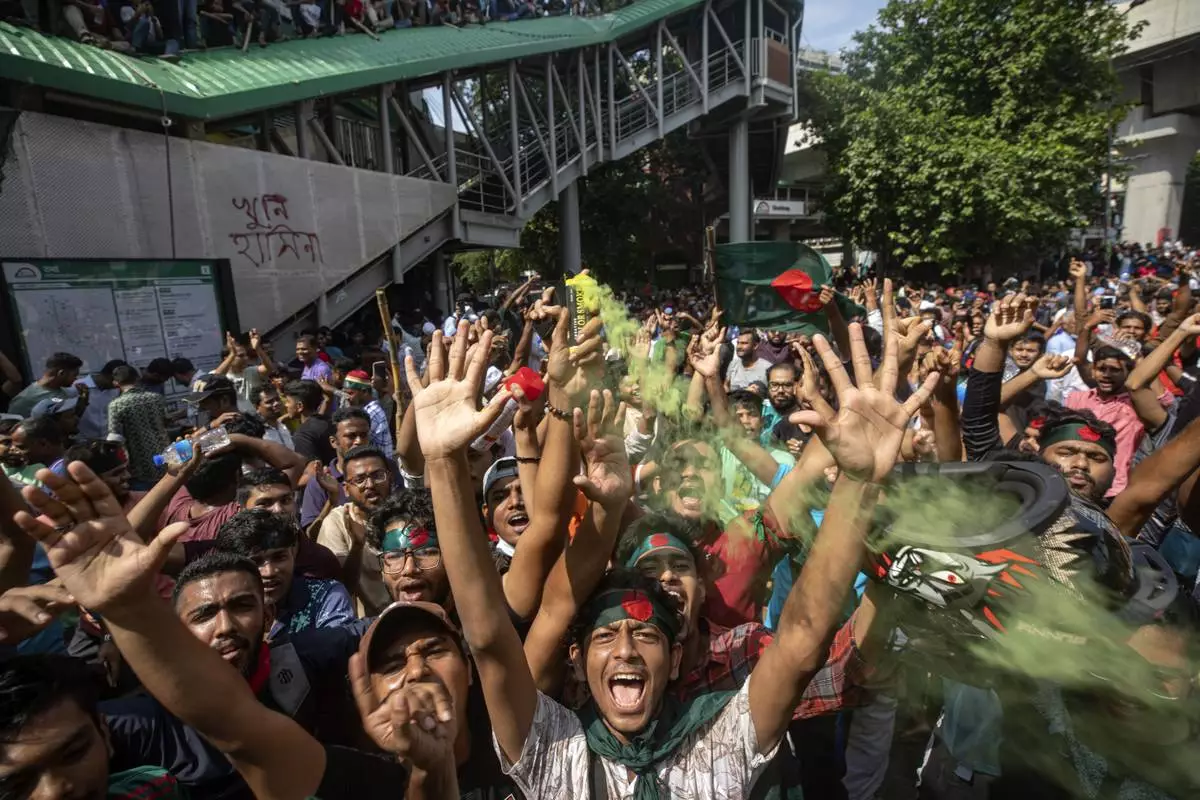
FILE- Protesters shout slogans as they celebrate Prime Minister Sheikh Hasina's resignation, in Dhaka, Bangladesh, Monday, Aug. 5, 2024. (AP Photo/Rajib Dhar, File)
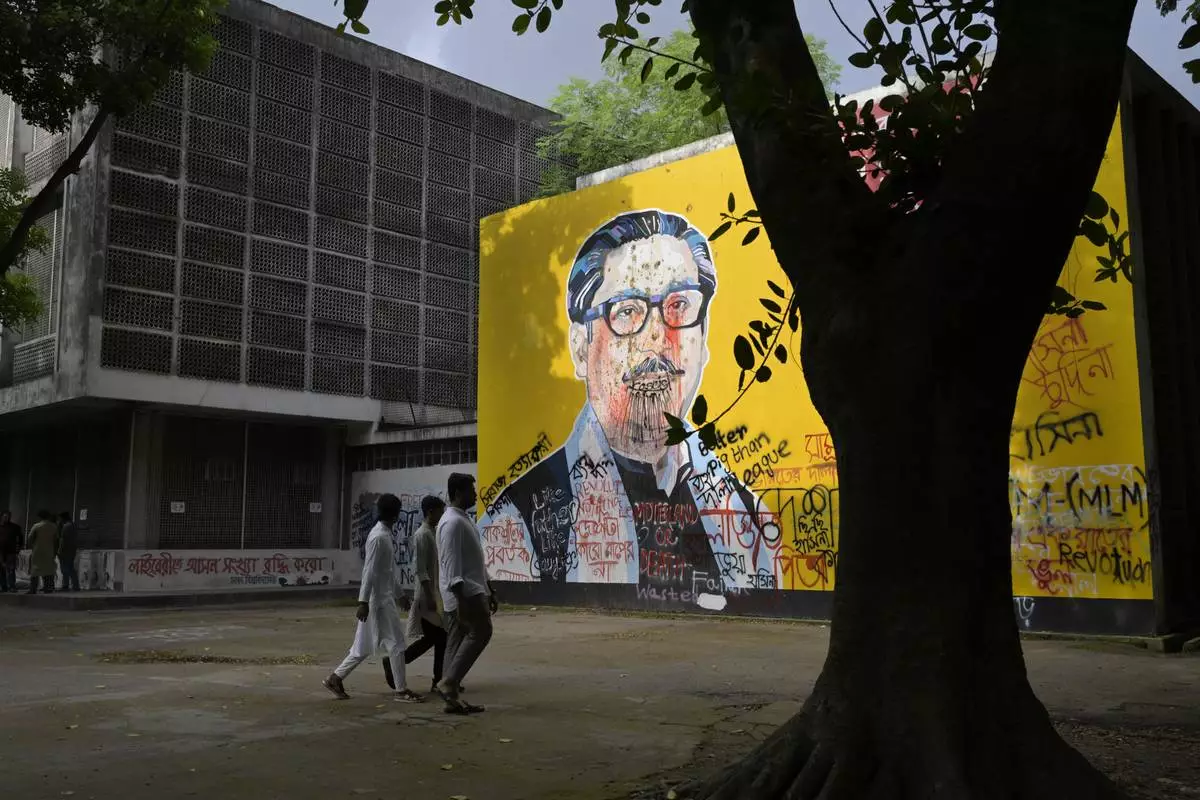
Students walk past a defaced mural of Sheikh Mujibur Rahman, father of ousted Prime Minister Sheikh Hasina, in Dhaka, Bangladesh, Saturday, Aug. 10, 2024. (AP Photo/Fatima Tuj Johora)
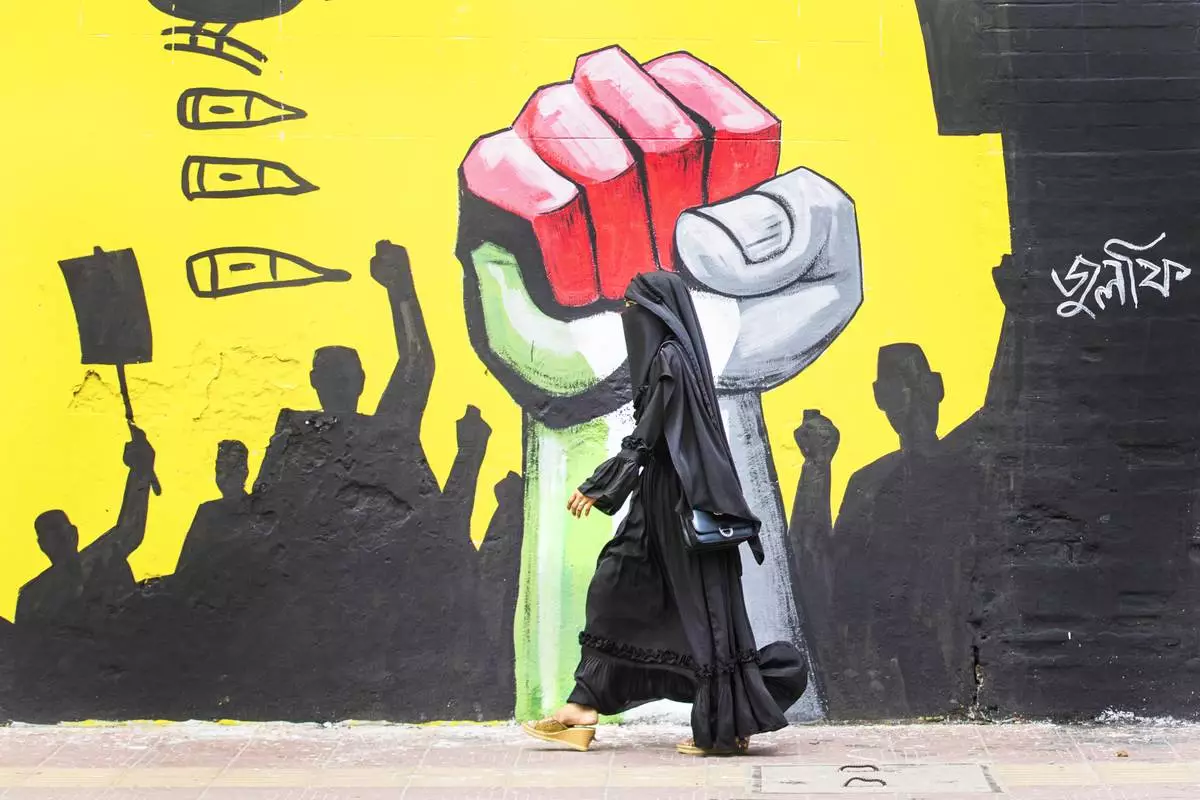
A woman walks past graffiti in Dhaka, Bangladesh, Friday, Aug. 9, 2024. (AP Photo/Rajib Dhar)
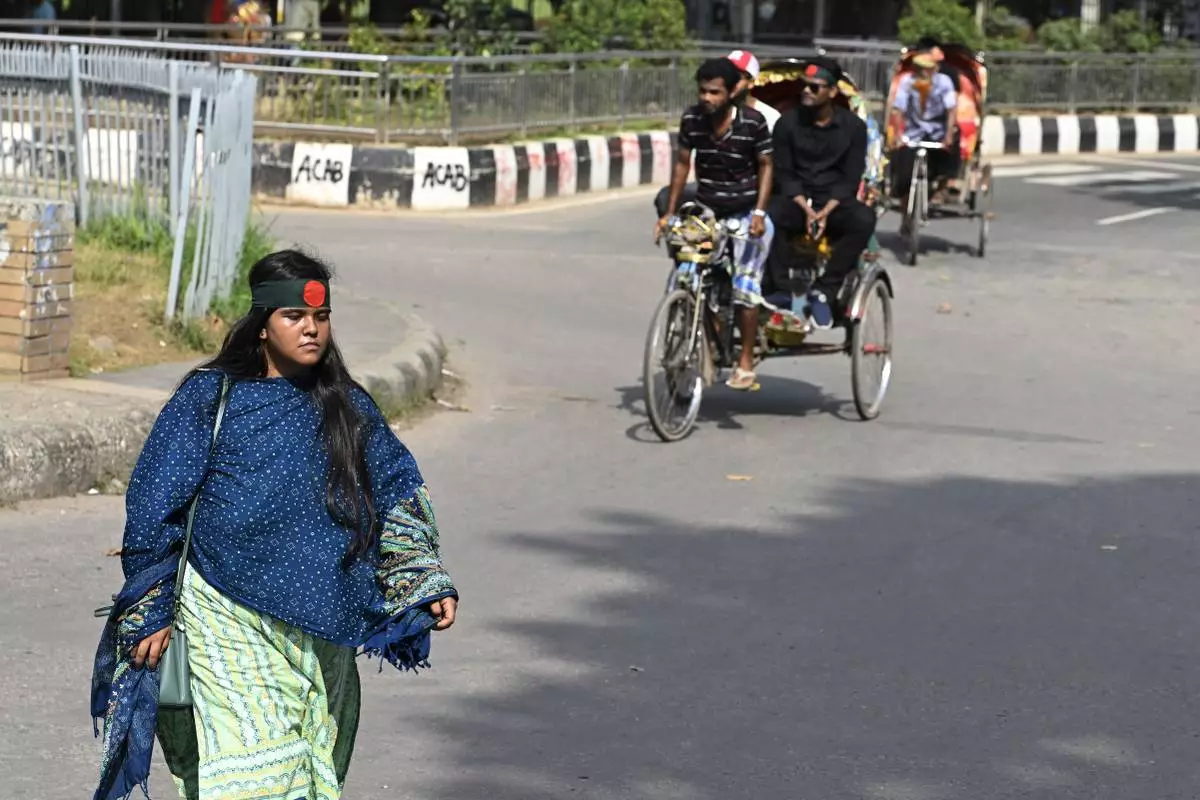
Nourin Sultana Toma, a student at Dhaka University, crosses a street to reach the university campus, in Dhaka, Bangladesh, Saturday, Aug. 10, 2024. (AP Photo/Fatima Tuj Johora)
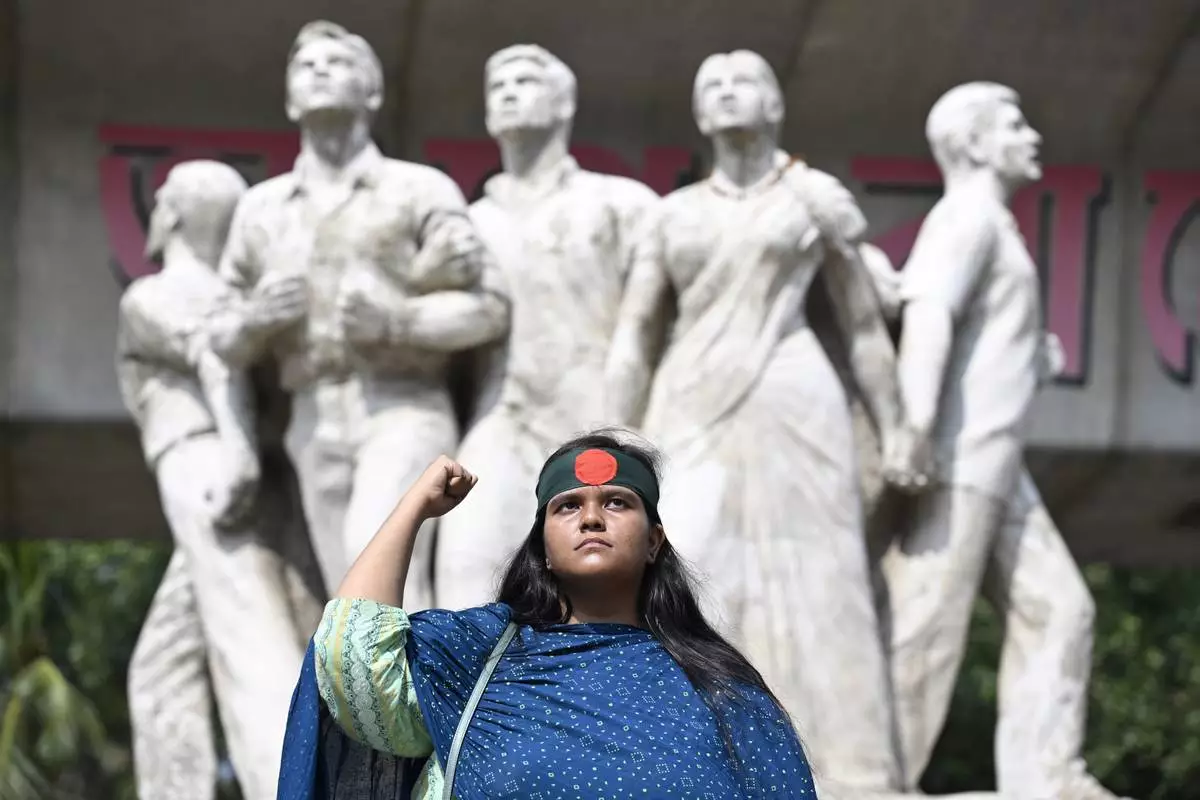
Nourin Sultana Toma, a student at Dhaka University, poses for a photograph on the university campus, in Dhaka, Bangladesh, Saturday, Aug. 10, 2024. (AP Photo/Fatima Tuj Johora)
UNITED NATIONS (AP) — The Israeli military backtracked on its account of the killing of 15 Palestinian medics by its forces last month after phone video appeared to contradict its claims that their vehicles did not have emergency signals on when troops opened fire on them in the Gaza Strip.
The military initially said it opened fire because the vehicles were “advancing suspiciously” on nearby troops without headlights or emergency signals. An Israeli military official, speaking late Saturday on condition of anonymity in line with regulations, said that account was “mistaken.”
The footage shows the Red Crescent and Civil Defense teams driving slowly with their emergency vehicles’ lights flashing, logos visible, as they pulled up to help an ambulance that had come under fire earlier. The teams do not appear to be acting unusually or in a threatening manner as three medics emerge and head toward the stricken ambulance.
Their vehicles immediately come under a barrage of gunfire, which goes on for more than five minutes with brief pauses. The owner of the phone can be heard praying.
“Forgive me, mother. This is the path I chose, mother, to help people,” he cries, his voice weak.
Eight Red Crescent personnel, six Civil Defense workers and a U.N. staffer were killed in the shooting before dawn on March 23 by Israeli troops conducting operations in Tel al-Sultan, a district of the southern Gaza city of Rafah. Troops then bulldozed over the bodies along with their mangled vehicles, burying them in a mass grave. U.N. and rescue workers were only able to reach the site a week later to dig out the bodies.
The Palestinian Red Crescent Society's vice president, Marwan Jilani, said the phone with the footage was found in the pocket of one of its slain staffers. The Palestinian ambassador to the United Nations distributed the video to the U.N. Security Council. The Associated Press obtained the video from a U.N. diplomat on condition of anonymity because it has not been made public.
One paramedic who survived, Munzer Abed, confirmed the veracity of the video to the AP. Two block-shaped concrete structures visible in the video are also seen in a U.N. video released Sunday showing the recovery of the bodies from the site — a sign they are in the same location.
Asked about the video, the Israeli military said Saturday that the incident was “under thorough examination.”
The head of the Palestinian Red Crescent Society, Younes Al-Khatib, called for an independent investigation. "We don’t trust any of the army investigations,” he told a briefing at the U.N. on Friday.
One medic, Assaad al-Nassasra, is still missing, the Red Crescent says. Abed said he saw al-Nassasra being led away blindfolded by Israeli troops. Al-Khatib said the organization has asked the military where it is holding the staffer.
Al-Khatib said the slain men had been “targeted at close range” and that a forensic autopsy report would be released soon.
Israel has accused Hamas of moving and hiding its fighters inside ambulances and emergency vehicles, as well as in hospitals and other civilian infrastructure, arguing that justifies strikes on them. Medical personnel largely deny the accusations.
Israeli strikes have killed more than 150 emergency responders from the Red Crescent and Civil Defense, most of them while on duty, as well as over 1,000 health workers, according to the U.N. The Israeli military rarely investigates such incidents.
Ambulances started heading to Tel al-Sultan at around 3:50 a.m. on March 23, responding to reports of wounded, Jilani said. The first ambulance returned safely with at least one casualty, he said. But, he said, subsequent ambulances came under fire.
His hands trembling, Abed told the AP on Saturday that as his ambulance entered the area, its siren lights were on. “All of a sudden, I am telling you, there was direct shooting at us,” so intense that the vehicle ground to a stop, he said.
A 10-year veteran of the Red Crescent, Abed said he was sitting in the back seat and ducked to the floor. He said he could hear nothing from his two colleagues in the front seat — the only others in the vehicle. They appear to have been killed instantly.
Israeli troops, some with night goggles, dragged Abed out of the ambulance and onto the ground, he said. They made him strip to his underwear, beat him all over his body with their rifle butts, then tied his hands behind his back, he said.
They interrogated him, asking him about his paramedic training and how many people were in the ambulance with him, he said. One soldier pressed the muzzle of his automatic rifle into his neck. Another pressed his knife blade into Abed’s palm, almost cutting it, until a third soldier pulled them away and warned Abed, “They’re crazy.”
Abed said he witnessed them opening fire on the next vehicles to arrive. Soldiers forced him onto his stomach and pressed a gun into his back, he said, and amid the shooting in the darkness, so he could only see two Civil Defense vehicles.
The phone video shows a rescue convoy of Red Crescent and Civil Defense vehicles that was sent out after contact was lost with the stricken ambulance. Taken from the dashboard of one vehicle, it shows several ambulances and a fire truck moving down a road through a barren area in the darkness. The emergency lights on their roofs are flashing the entire way.
They arrive at an ambulance on the side of the road and stop next to it, their lights still flashing. No Israeli troops are visible.
“Lord, let them be OK,” a man in the car says. Then he cries out, “They’re tossed around on the ground!” — apparently referring to bodies. Three men in orange Civil Defense clothing can be seen getting out of the vehicles and walking toward the stopped ambulance.
A shot rings out and one of the men appears to fall. Gunfire erupts.
The man holding the phone appears to scramble out of the car and onto the ground, but the screen goes black, though the audio continues. The gunfire goes on for nearly five and a half minutes, with long, heavy barrages followed by silences punctuated by individual shots and shouts and screams.
Throughout, the man with the phone says over and over, “There is no God but God and Muhammad is God’s prophet” — the profession of faith that Muslims say when they fear they are about to die. Near the end of the six-minute, 40-second video, voices can be heard shouting in Hebrew. “The Jews are coming,” the man said, referring to Israeli soldiers, before the video cuts off.
The Israeli military official asserted there was “no mistreatment,” and said he didn’t know why the vehicles had been buried. He had no information about the medic who remained missing.
The Israeli military says that after the shooting, troops determined they had killed a Hamas figure named Mohammed Amin Shobaki and eight other militants. However, none of the 15 slain medics has that name, and no other bodies are known to have been found at the site.
The military has not said what happened to Shobaki's body or released the names of the other alleged militants. The Israeli military official said Israel was “working to bring evidence” that Hamas operatives were killed.
Jonathan Whittall, interim head in Gaza of the U.N. humanitarian office OCHA, dismissed allegations that the slain medics were Hamas militants, saying staff had worked with the same medics previously in evacuating patients from hospitals and other tasks.
“These are paramedic crews that I personally have met before," he said. “They were buried in their uniforms with their gloves on. They were ready to save lives.”
Shurafa reported from Deir al-Balah, Gaza Strip; Keath from Cairo. Associated Press writers Farnoush Amiri at the United Nations, Sarah El Deeb in Cairo, Natalie Melzer in Tel Aviv, Israel, and Areej Hazboun contributed to this report.
Follow AP’s war coverage at https://apnews.com/hub/israel-hamas-war
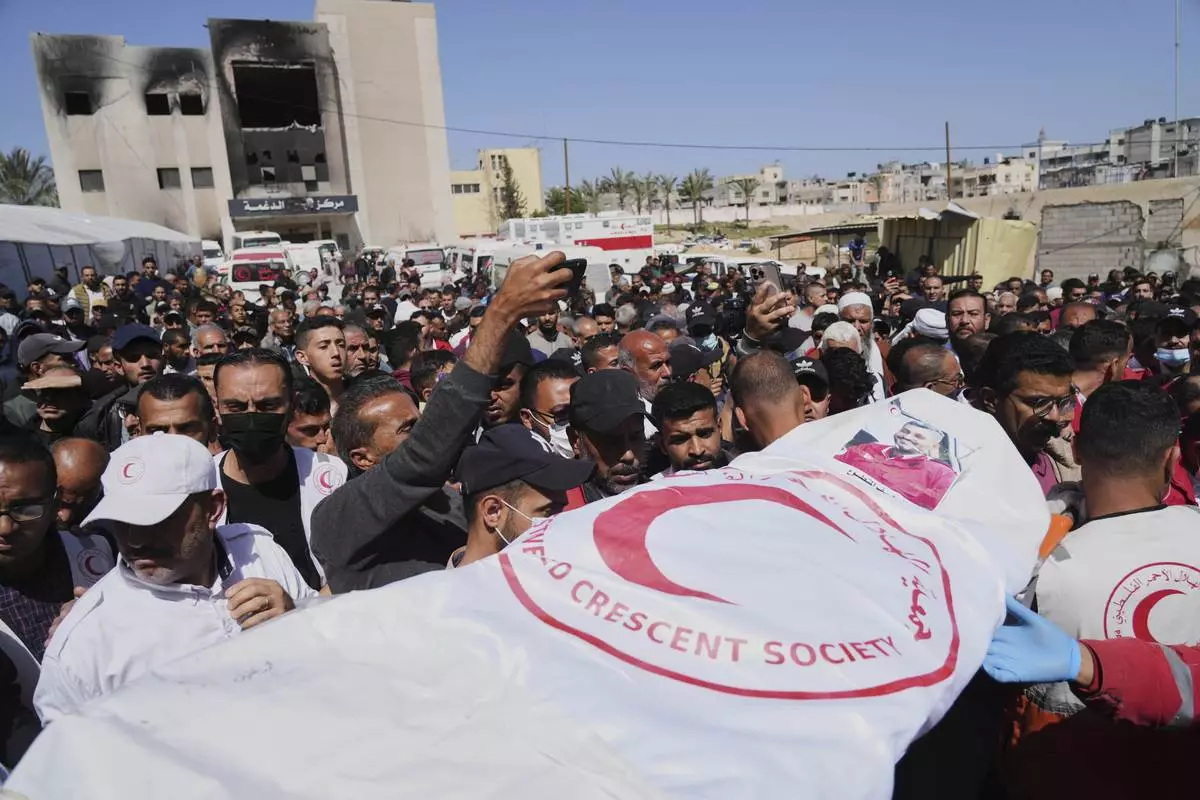
FILE.- Mourners carry the bodies of 8 Red Crescent emergency responders, recovered in Rafah a week after an Israeli attack, as they are transported for burial from a hospital in Deir al-Balah, Gaza Strip, on Monday, March 31, 2025. (AP Photo/Abdel Kareem Hana,File)
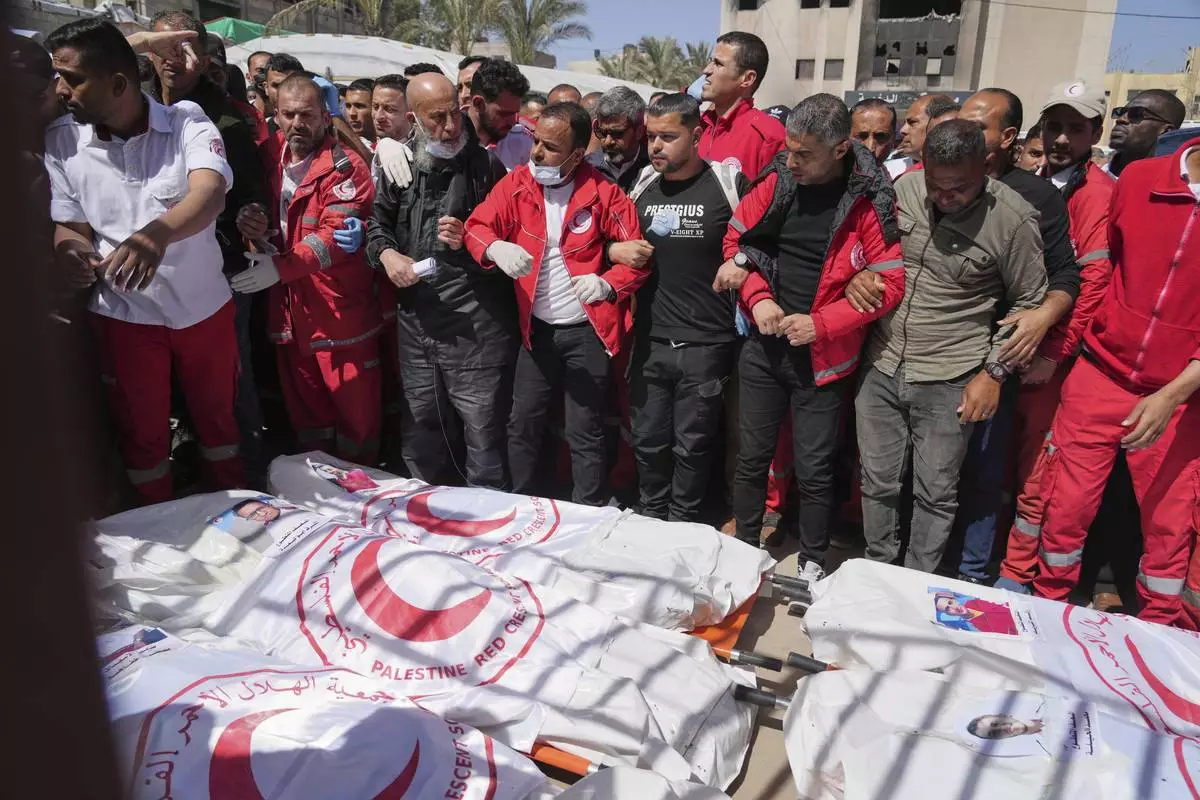
FILE.- Mourners gather around the bodies of 8 Red Crescent emergency responders, recovered in Rafah a week after an Israeli attack, as they are transported for burial from a hospital in Deir al-Balah, Gaza Strip, on Monday, March 31, 2025. (AP Photo/Abdel Kareem Hana,File)















